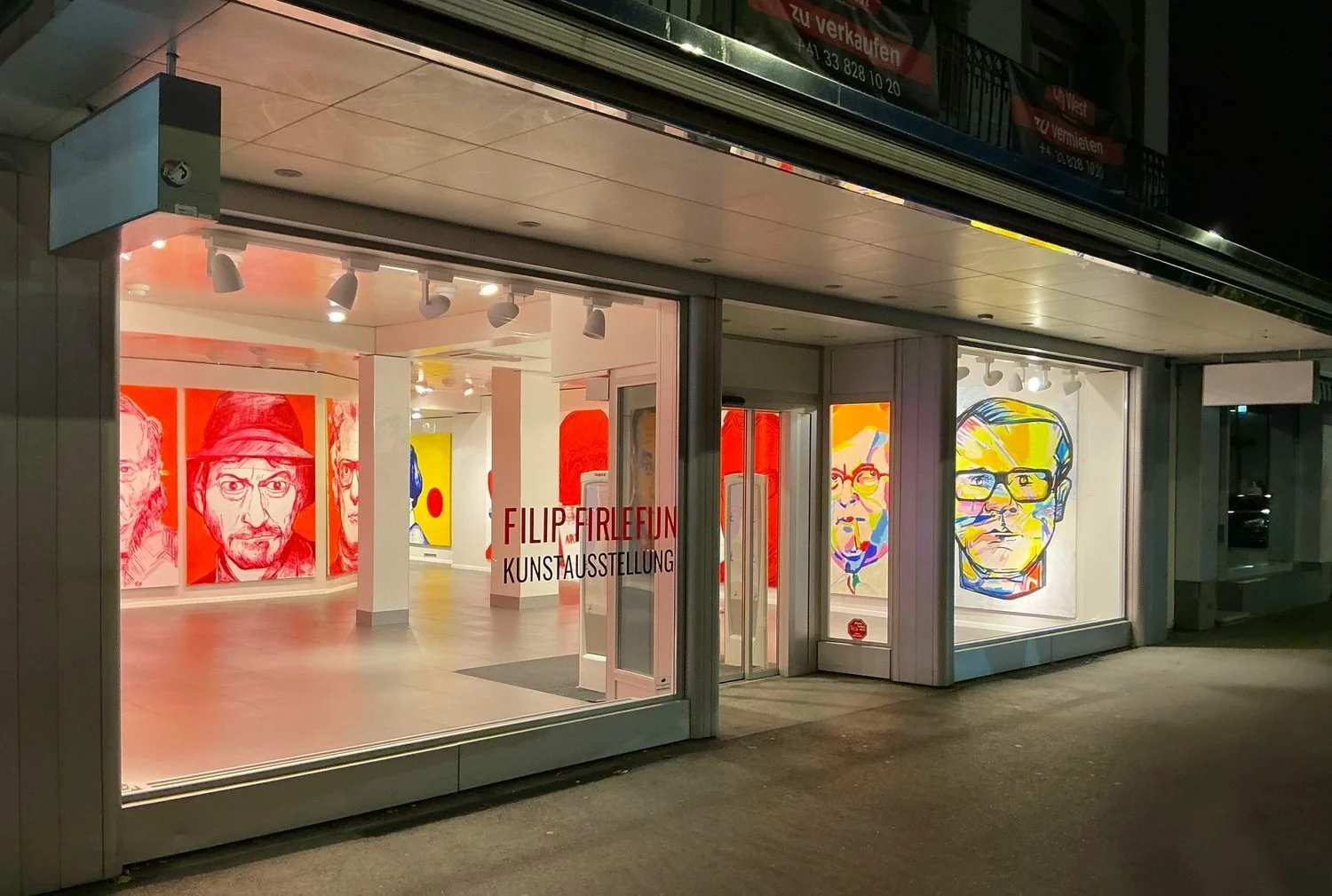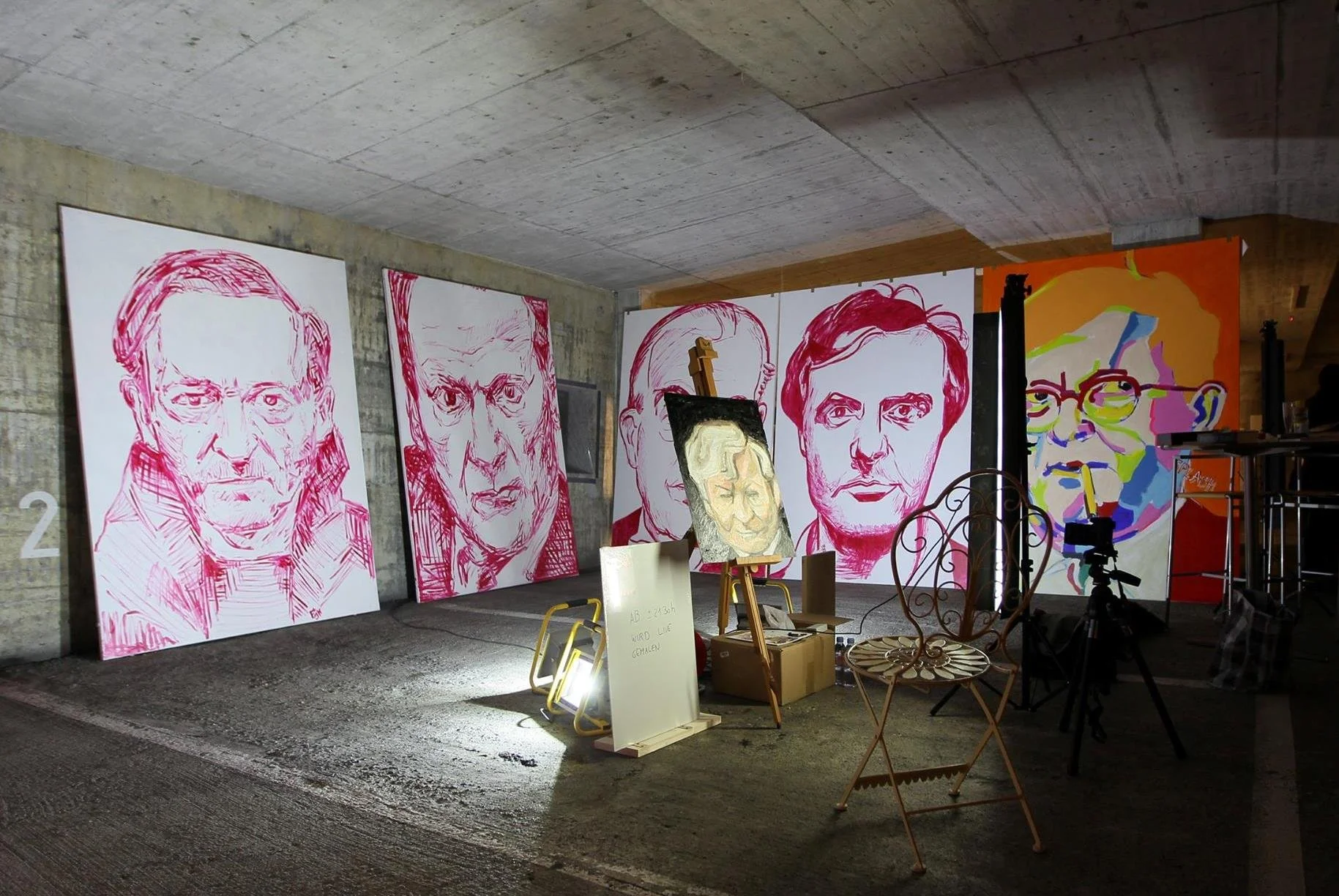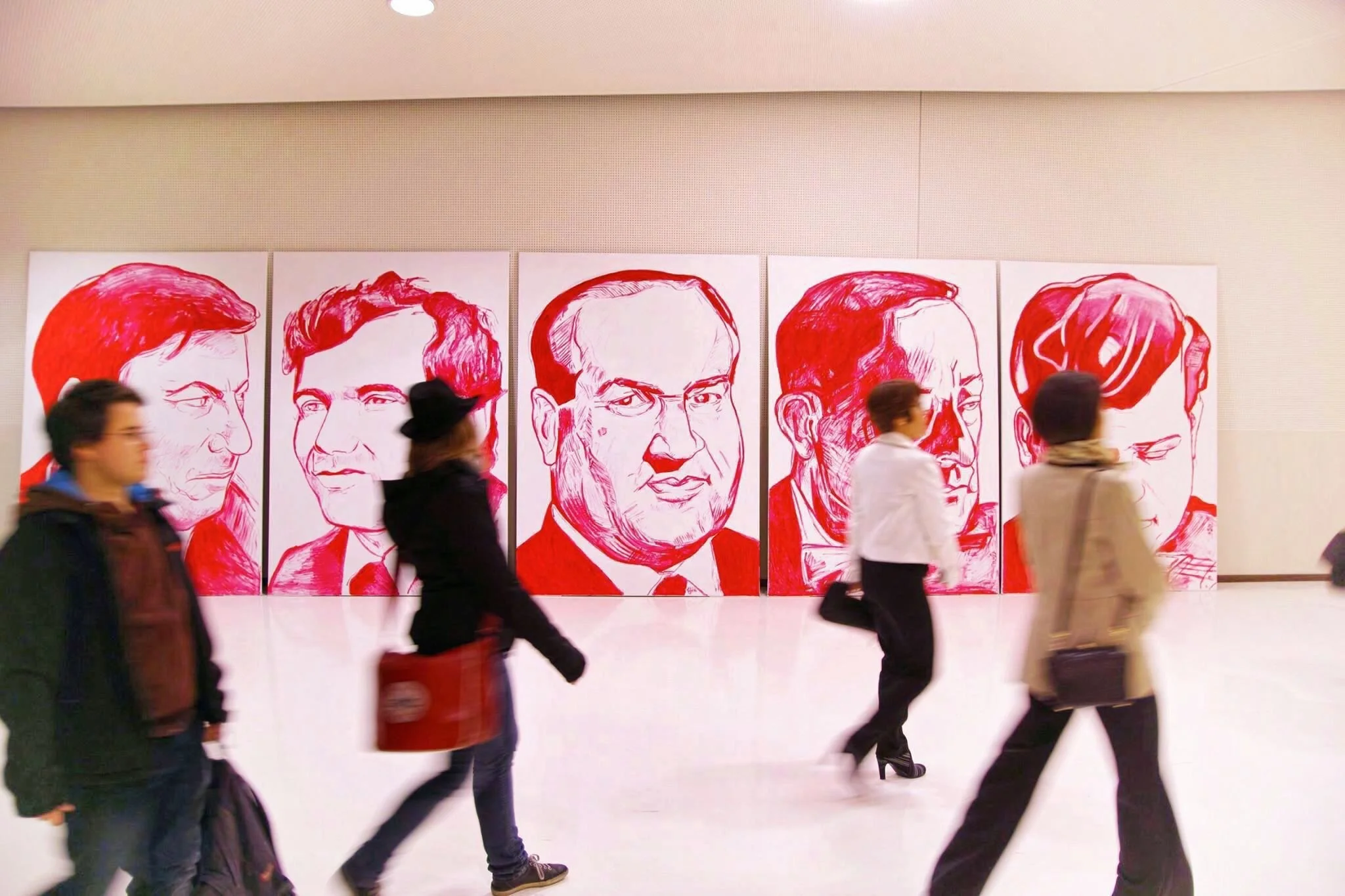Art Note on the Portraits
Filip Firlefijn grew up immersed in the Franco-Belgian comic culture – an influence still visible in his works today. At the same time, he opens his art to the international scene and art history. Much like Andy Warhol, he places the public sphere at the center of his practice, though in recent years this sphere has increasingly expanded into the digital realm and the internet.
"We live in a peculiar bubble of knowledge that is no longer confined to our streets, schools, or workplaces. Information is everywhere. And yet the longing for more is growing – for facts, for knowledge, for new perspectives. For a greater life, a place in the spotlight, or in history."
Click on the photo to access the latest exhibition:
The price lists are attached.
Style, humor, and intelligence in his art keep alive the relativity of his own hunger and preserve hunger itself in a healthy way. There is also a clear hunger for craftsmanship, for art that often seems to lie further back in the past. His large-format paintings in magenta on vermilion red backgrounds appear like sketches for more realistic, grand portraits. In doing so, he awakens a more serious hunger in the viewer’s imagination—one that naturally leads to a desire for depth and meaning, and underlines the layers of profundity that pop culture itself, or any emerging culture, can contain.
The “everyone is famous” trend on the internet goes hand in hand with the seemingly immortal character of pop culture, which since the time of Warhol has become a fixed concept in art history. There are ever more people, and ever more voices who want to be heard—and can be. Yet the immortality of this spotlight is only an illusion, and portraits serve as a signal of that. Famous faces, like books, can of course be forgotten or vanish into nothing amidst the sheer abundance. There is a tension between nothingness and value, between eternity and mortality, between relativity and absolutism or narcissism, between seriousness and humor.
Yet the focus on valuable niches, which resurface again and again, enriches our accumulated and ever-growing knowledge. Pop culture itself has multiple layers, and thus still holds the potential to add depth and future—leading to a better understanding of ourselves as humans, our possibilities, and the world we live in, as well as the possibilities this world can offer. It can motivate and inspire future generations, as this broad audience will necessarily continue to seek its potential within a rapidly changing reality, a growing and more diverse democracy, and in broader contexts and discussions. Through pop culture, we must continue to inspire people to preserve the significance of our knowledge, philosophy, literature, and more. Pop culture reaches more and more people, and enables progress where stagnation could lead to dangerous situations. We must keep the world engaged—before more than 10 billion people lose the thread. We are also obliged to consistently support our reproductive impulses, while bringing calm and security.
Click on the photo to access the last exhibition:
The price lists are enclosed.
Beyond this, portraits will also gain increasing significance in the context of artificial intelligence. Numerous artworks have already been created with the help of AI. The question has been, and remains: how much value does this art have, or can it have? ChatGPT marked another clearly visible public step toward AI. On YouTube, videos have appeared of well-known songs now being sung by artists who are long deceased. Deep Fake has already demonstrated what it is capable of. AI will inevitably become part of our culture. But what cultural value will the books or screenplays written by it hold, the films it will create? Many will accept it—entertainment comes first. Others will continue to long for the creativity of the human brain, even in the face of enormous technological progress.
Given our own potential to destroy the world since the development of the atomic bomb, the question also remains whether our ethical development can keep pace with our technological advances—or whether AI will only amplify our shortcomings. We already get on each other’s nerves; what if AI “supports” us in that too? In an increasingly complex society, we must constantly be able to form a critical self-image. For instance, will we ultimately become robotized, and what will remain of the human itself? In 100 years, will we still think for ourselves? To what extent do we still do so today?
"When renovating a house, one often quickly forgets what it looked like before. The iconic portraits I have created remain an important reminder of how far we have come as humans without AI—and how many valuable discoveries, inventions, and creations were already made before. And should we not first allow women the opportunity to step into the spotlight, after having long remained invisible supports of society, hidden in the shadows? Of course, my portraits are by no means against AI; they can also affirm equality. But they emphasize the importance and value of the human brain and call for caution."
(adapted and updated from the biographical note in Contemporary Art Curator Magazine)
Filip Firlefijn is also a photographer, exhibiting his work in art galleries and at events. Just as in drawing and painting, he is largely self-taught in photography.
Earlier projects with the large paintings:
“Kunstnacht” Brienz:
Prominent people:
Berne:
Factory and track and field:






